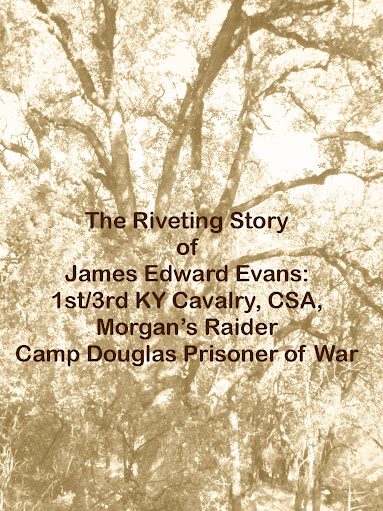October 26, 1861
Union forces under Major Jesse J. Phillips made an early morning attack against roughly 160 men in a Confederate Training Camp at Saratoga Springs in Lyon County, Kentucky. The attack resulted in another Union victory.
“Our skirmishers succeeded in surrounding and capturing the rebel pickets without firing a gun, and the advance of our troops was unsuspected by the rebels until we wheeled in column of platoon in the lane of full view, 600 yards distant from their camp at about 7 A.M. They, to the number of about 160 men, dismounted immediately formed in line, awaiting our attack until we advanced within 22 years of their line. We, when first coming in sight, having charged on them the double quick, they commenced an irregular fire when we were a distance of 300 yards, but at our approach broke for their horses, though many took shelter behind fences, trees or houses. We charged within 50 yards, halted, delivered a volley, and then charged bayonet, driving them from the houses and from their places of cover, and they then fled in every direction, some on foot, others on horseback. An occasional firing was kept up for half an hour or more. Six of their men were left dead and one mortally wounded. Several others were seen to ride off clinging to their horses and were wounded.”
~ Report of Major Jesse J. Phillips
According to Lyon County historian, Odell Walker, the bullet holes in the original siding of the Saratoga United Methodist Church bear proof to the location of the battle. Mr. Walker, a most generous gentleman, graciously granted permission to reproduce the following article in full:
The Battle of Saratoga
“In 1798, David Walker, the founder of Eddyville, appeared before the Christian County Court and made a request that a road be laid out from the Eddy Cabbins on the Cumberland River to Prince’s Place at the Big Spring.
The Eddy Cabbins was a campsite for river travelers at the mouth of Eddy Creek, and Prince’s Plcase was the home of William Prince, which later became Princeton.
Walker’s request was granted and the road followed the general corridor of present day Highway 293. The road was later referred to as the Princeton-Eddyville Turnpike. Before the impoundment of Lake Barklery, U.S. Highway 62 followed the same route to Old Eddyville and on to Old Kuttawa.
Approximately four miles east of the old town of Eddyville, on the above named road, was a large spring that flowed into Glass Creek.
When Matthew Lyon and his party arrived at Eddyville in 1802, Lyon’s stepson, Elisha Galusha, was assigned the land around this spring, and for many years, it was called Galusha Spring.
Because of the road, Galusha Springs became a favorite stopping place for travelers to get a drink of fresh water and water for their horses. Because of the level ground and plenty of shade, the Spring became a favorite place for picnics and other gatherings.
In 1822, the pioneer Methodist preacher, Benjamin Ogden, deeded a parcel of land to Reed’s Chapel or Reed’s Campground, upon which a log meeting house was erected.
By the 1850’s, a community had developed in the area consisting of a country store, post office and tavern.
According to legend, a group of young men and boys were looking for mischief one Halloween night. They had heard or read of Saratoga Springs, N.Y. They took a long plan and painted “Saratoga Springs” on it and nailed it over the door of the store. They thought this would make the store owner angry, but much to their surprise, when the owner arrived the next morning to open up, he liked the new name, and thus, the community became known as Saratoga Springs.
The name Reed’s Chapel was changed to Saratoga Methodist Church, and in 1859 a new frame church edifice replaced the original log building.
On Oct 15, 1861, a troop of Calvary was mustered into Confederate service at Hopkinsville. The unit became Company “G”, First Kentucky Calvary, and a majority of the members were from Lyon and Caldwell County.
Company “G” was placed under the command of Captain M.D. Wilcox and assigned for training at Saratoga Springs. The group had a double responsibility; first, they were engaged in military training; second, they were to serve as rangers or scouts to watch for the movement of federal troops overland. The area to be patrolled was from Cave-In-Rock, on the Ohio River, to Hopkinsville.
Saratoga Springs was an ideal location for a small group training camp with an abundance of water, both spring and creek, level land for military drills and nearby foothills for firewood.
The camp at Saratoga Springs was destined to be short-lived. On Sept 6, 1861, General U.S. Grant captured and took possession of Paducah. Brigadier General C. F. Smith was in command of the Union forces at Paducah and received intelligence of Captain Wilcox’s activities at Saratoga Springs.
On Oct 25, 1861, three full companies of infantry consisting of 300 men were dispatched to Saratoga Springs. This group was under the command of Major Jesse J Phillips. At 4:30 p.m. the troops staged a parade for General Smith and were issued two days of rations. The troops boarded the steamer, “Lake Erie” and pulled away from the Paducah wharf, under the escort of the gunboat, “Conestoga.”
The boats steamed up the Ohio River to Smithland and turned into the Cumberland River. They continued upstream to a pre-selected landing at William Kelly’s New Union Forge. This site later became the town of Kuttawa.
Under the cover of darkness, the troops disembarked and marched northward to the area of the old Kuttawa Springs and continued north along Hammond Creek for a distance of about five miles. From this point, the troops traveled in a northeast semi-circle to the Eddyville-Princeton road to a point about a mile east of Saratoga Springs.
The success of the Saratoga raid depended on total surprise and this was accomplished by avoiding established roads and traveling through fields and woods. The Confederates at Saratoga Springs misjudged the plan of the Union Army. The Confederates anticipated that should an attack occur, the enemy would travel north on the Varmint Trace Road and turn east on the Liberty Church Road to Saratoga Springs. A watchman was stationed at Liberty Church, but this point was passed by the Union Soldiers.
The Union forces arrived on the Eddyville-Princeton road at about daybreak on the morning of the 26th, and at approximately 7 A.M. they went into formation to attack the Confederate Camp at Saratoga Springs.
The following is taken from Major Phillip’s official report of the battle: “Our skirmishers succeeded in surrounding and capturing the rebel pickets without firing a gun, and the advance of our troops was unsuspected by the rebels until we wheeled in column of platoon in the lane of full view, 600 yards distant from their camp at about 7 A.M.
They, to the number of about 160 men, dismounted immediately formed in line, awaiting our attack until we advanced within 22 years of their line. We, when first coming in sight, having charged on them the double quick, they commenced an irregular fire when we were a distance of 300 yards, but at our approach broke for their horses, though many took shelter behind fences, trees or houses.
We charged within 50 yards, halted, delivered a volley, and then charged bayonet, driving them from the houses and from their places of cover, and they then fled in every direction, some on foot, others on horseback. An occasional firing was kept up for half an hour or more. Six of their men were left dead and one mortally wounded. Several others were seen to ride off clinging to their horses and were wounded.”
The Saratoga Methodist Church building still has bullet holes to attest to the battle.
The newly enlisted and untrained Confederate soldiers were no match for a well-trained and seasoned Union Army.
In the meantime, the steamers, Lake Erie and Conestoga, had moved up to Eddyville and docked, awaiting the arrival of the troops for the trip back to Paducah.
The Union Army took ConfederatecContraband including 30 horses, several mules, 40 saddles, 30 bridles, harness, two wagons, 30 blankets, several rifles, shotguns, sabers, swords, etc.
The Union Army, with their contraband and several Confederate prisoners, marched on down the Eddyville-Princeton road from Saratoga Springs to Eddyville, boarded the waiting boats for the return trip to Paducah.”
~ Odell Walker[i]
ENDNOTES
[i] “Our Heritage: A Look Back At The History of Lyon County,” The Lyon County Historical Society and The Herald Ledger Newspaper, July 3, 1996. Mr. Walker is also the author of, “Profiles of the Past” 1994 , which offers in depth information regarding the battle.
Subscribe to:
Post Comments (Atom)





No comments:
Post a Comment